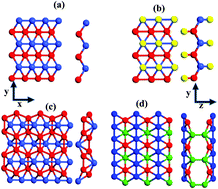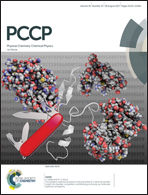Current–voltage characteristics of borophene and borophane sheets
Abstract
Motivated by recent experimental and theoretical research on a monolayer of boron atoms, borophene, the current–voltage characteristics of three different borophene sheets, 2Pmmn, 8Pmmn, and 8Pmmm, are calculated using density functional theory combined with the nonequilibrium Green’s function formalism. Borophene sheets with two and eight atoms in a unit cell are considered. Their band structure, electron density, and structural anisotropy are analyzed in detail. The results show that the 8Pmmn and 8Pmmm structures that have eight atoms in the unit cell have less anisotropy than 2Pmmn. In addition, although 8Pmmn shows a Dirac cone in the band structure, its current is lower than that of the other two. We also consider a fully hydrogenated borophene, borophane, and find that the hydrogenation process reduces the structural anisotropy and the current significantly. Our findings reveal that the current–voltage characteristics of the borophene sheets can be used to detect the type and the growth direction of the sample because it is strongly dependent on the direction of the electron transport, anisotropy, and details of the unit cell of the borophene.



 Please wait while we load your content...
Please wait while we load your content...